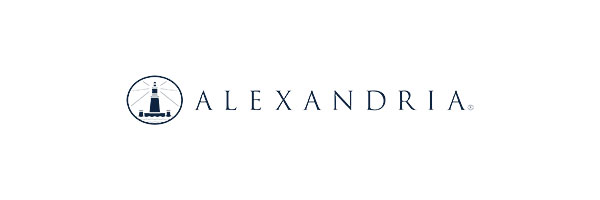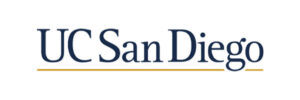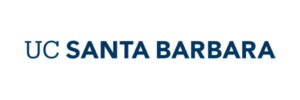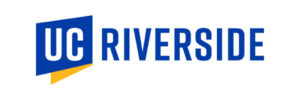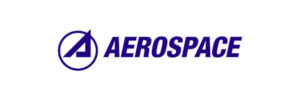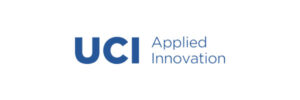- This event has passed.
First Look SoCal Showcase 2019
June 19, 2019 @ 12:30 pm – 6:30 pm
The premier annual conference celebrating the best early stage teams commercializing deep tech and life science breakthroughs from SoCal’s top research institutions. The program will feature quick-pitch presentations from the 30 teams split into three concurrent domain tracks. Each presentation is followed by audience Q&A. There will also be a private meet and greet space for investors and teams to connect during the event. An investor panel discussion and networking cocktail reception to follow presentations.
You’ll See…A showcase of the 30 best early stage startups emerging from SoCal’s top research institutions and Investors who represent the region’s diversity of STEM talent and ideas.
Why You Should Attend
Unparalleled opportunities for SoCal startup teams to connect with investors, mentors and other support resources crucial at the early seed stage.
Discover a source of plentiful investment opportunities with companies on track to raise series a funding.
Network with SoCal’s professional community focused on commercializing deep tech.
AGENDA
Check-in 12:30 PM | Welcome + Keynote 1:30 PM | Team Presentations 2:30 PM | Investor Panel + Cocktails 6:30 PM
Check-in & Welcome
| Time | Event |
| 12:30pm | Attendee Check-in |
| 1:30pm | WelcomeGeneral Session, Room 107 |
| 1:40pm | KeynoteBeth Seidenberg, Funding Managing Director of Westlake Village BioPartners Gene Sykes, Chairman, Alliance for SoCal Innovation |
| 2:20pm | Transition to Track Breakout RoomsLife Science – Therapeutics: Room 101 Life Science – Diagnostics: Room 106 Technology: Room 107 (General Session) |
| 2:30pm | Introductions by Track ModeratorsLife Science – Diagnostics: Matthew Bresnahan, Partner, Wilson Sonsini Goodrich & Rosati Life Science – Therapeutics: Hallie Kuhn, Principal, Alexandria Venture Investments Technology: Richard Wolpert, Author, Investor, Founder, Executive Chairman at HelloTech |
Start Up Presentations Part 1
| Time | Life Science – Therapeutics (Room 101) | Life Science – Diagnostics (Room 106) | Intro Track 3: Technology (Room 107) |
| Sponsored by Wilson Sonsini Goodrich & Rosati | Sponsored by Alexandria Real Estate Equities | ||
| 2:35pm | Angeles Therapeutics, Inc – USC | Abreos Biosciences – UC San Diego | Clearbridge Biophonotics FPM – Caltach |
| 2:50pm | Basilard BioTech – UC Riverside | Brainleap Technologies – UC San Diego | ETC Solar – Caltech |
| 3:05pm | Radoptics – US Riverside | HouseCalls Mobile – Cal Poly | FreeGen Technologies – US San Deigo |
| 3:20pm | BioVinc – CalState LA | Milo Sensors – UC Santa Barbara | Helicoid Industries – UC Riverside |
| 3:35pm | CarthroniX – USC | NOWA Innovations – UC Irvine | (No Presentation) |
| 3:50pm | Break | Break | Break |
Start Up Presentations Part 2
| Time | Life Science – Therapeutics (Room 101) | Life Science – Diagnostics (Room 106) | Intro Track 3: Technology (Room 107) |
| Sponsored by Wilson Sonsini Goodrich & Rosati | Sponsored by Alexandria Real Estate Equities | ||
| 4:10pm | Diadem Biotherapeutics – CalState LA | RedCare – UC San Diego | Mesh Candy – CalState LA |
| 4:25pm | DTx Pharma – University of San Diego | bioProtonics – UC Santa Barbara | N3: Nanomechanical Neural Networks – Caltech |
| 4:40pm | JeniVision – UC Irvine | Soft Health Technologies – UC Irvine | Tastry – Col Poly |
| 4:55pm | RNAceuticals – UC Irvine | Vantronics – Skysong Innovations | The Hurd Co – UC Santa Barbara |
| 5:10pm | (No Presentations) | Veocor Diagnostics – UC San Diego | (No Presentation) |
| 5:25pm | Return to General Session (107)Venture Capital Panel: Successful Investing in SoCal Early Tech Alex Andrianopoulos – Chief R&D Officer, Kairos Ventures Minnie Ingersoll – Venture Partner, TenOneTen Ventures Hallie Kuhn – Principal, Alexandria Ventures Investments Molly Schmid – Advisor/Consultant, UC Irvine + EIR, Alfred Mann Institute Kevin Zhang – Partner, Upfront Ventures Sean Moriarty – CEO, Leaf Group (Moderator) |
||
| 6:25pm | Event Wrap Up Andy Wilson – Executive Director, Alliance for SoCal Innovation |
||
| 6:30pm | Networking Reception Conference Centere Foyer |
||
The First Look Showcase is presented by the Alliance for Southern California Innovation and the Los Angeles Venture Association (“LAVA”).
KEYNOTE SPEAKERS
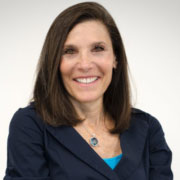



Dr. Beth Seidenberg has medicine in her blood. From standing on a stool as a child watching her father conducting heart surgery, to her groundbreaking work developing new treatments for diseases as diverse as AIDS and arthritis, Seidenberg has applied her medical expertise to the venture capital world. She helps entrepreneurs translate their scientific breakthroughs into new medicines to help patients. Along the way, she has built 15 successful biotech companies.
As a founding managing director of Westlake Village BioPartners, Seidenberg believes this is the Golden Age of Biotech. “The pace and quality of innovation has hit an inflection point,” she explains. “With Westlake Village BioPartners we have the freedom and expertise to turn the next big technologies into products and companies that benefit human health.”
Prior to life science investing, Seidenberg’s career focused on developing new treatments for AIDS, arthritis, asthma, cancer and psoriasis, cardiovascular, metabolic, neurological and renal disorders for over 20 years. During that time, she introduced 10 innovative products to market.
Seidenberg holds a Bachelor of Science degree in biology and anthropology from Barnard College and attended medical school at the University of Miami School of Medicine. She completed her medical residency at Johns Hopkins University and George Washington University, and Fellowship at the National Institutes of Health.


Gene Sykes is the Chairman of the Alliance for SoCal Innovation. A native Angeleno, Sykes is a trustee of the California chapter of The Nature Conservancy, a board member of Common Sense Media, a member of the Advisory Council of the Stanford University Graduate School of Business and a member of the Stanford board of trustees. Sykes joined the Advisory Council for the Alliance for Southern California Innovation in 2017.
Sykes received a bachelor’s degree in government from Harvard University and an M.B.A. from Stanford Graduate School of Business. He remains an employee of Goldman Sachs but has stepped down from his leadership positions. While at LA 2028, he does not participate in Goldman Sachs’s day-to-day operations and serves the firm in a limited capacity as a Managing Director. His work with LA 2028 is unpaid.
VC PANEL






Alex leads the team of investment analysts at Kairos that conducts research and due diligence on all the companies we consider to invest in, either through incubation or Series-A funds. Alex joined Kairos with 20+ years of experience at high-tech companies specializing in enterprise software, ranging in size from startups with a handful of employees to behemoths with tens of thousands of employees. In these companies, Alex led global teams of dozens of employees responsible for product strategy, intellectual property protection, engineering, professional services, sales, marketing, and business development, and actively participated in the efforts to close, and successfully closed, multiple rounds of financing by venture capital firms as well as the public markets. Moreover, while at Oracle, Alex led the research and strategic alignment efforts for numerous acquisitions ranging in value from a few tens of millions to billions of dollars. Alex has a degree in Electrical Engineering with a specialization in Computer Engineering and an MBA in Finance and Marketing.






Gene Sykes is the Chairman of the Alliance for SoCal Innovation. A native Angeleno, Sykes is a trustee of the California chapter of The Nature Conservancy, a board member of Common Sense Media, a member of the Advisory Council of the Stanford University Graduate School of Business and a member of the Stanford board of trustees. Sykes joined the Advisory Council for the Alliance for Southern California Innovation in 2017.
Sykes received a bachelor’s degree in government from Harvard University and an M.B.A. from Stanford Graduate School of Business. He remains an employee of Goldman Sachs but has stepped down from his leadership positions. While at LA 2028, he does not participate in Goldman Sachs’s day-to-day operations and serves the firm in a limited capacity as a Managing Director. His work with LA 2028 is unpaid.
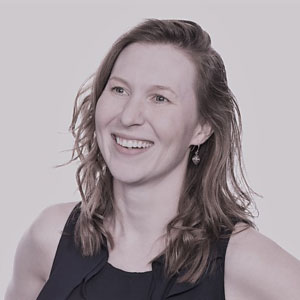





Hallie Kuhn is a Principal at Alexandria Venture Investments, where she focuses on life science investments in the LA region. Before joining Alexandria, Hallie was a Principal at LS Polaris Innovation Fund in Boston, MA, specializing in seed and early-stage venture investments. Concurrently, she served as Chief of Staff for Amy Schulman, a partner at Polaris Partners, supporting operations and business development for several Polaris portfolio companies. Prior to her work in venture capital she was a Senior Consultant at ClearView Healthcare partners. Hallie holds a Ph.D. in Systems Biology from Harvard University and was a Churchill Scholar at Cambridge University. She is a recipient of a National Science Foundation Graduate Fellowship, National Defense Science and Engineering Fellowship, and Harvard Ashford Fellowship. She holds a B.S. from Harvey Mudd College.
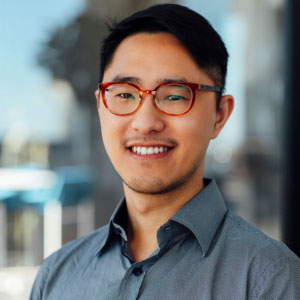





Kevin looks for interdisciplinary entrepreneurs solving big problems in healthcare and the life sciences. He’s also a passionate gamer and invests in interactive media platforms, tools and content. Prior to joining Upfront in 2012, Kevin was at The Boston Consulting Group, where he advised on strategy, M&A and operations for technology, healthcare, and industrial goods clients in the US and Asia. Previously, Kevin worked at Verscend Technologies, a healthcare software startup in Boston, focusing on data analytics product development selling into payers and providers.
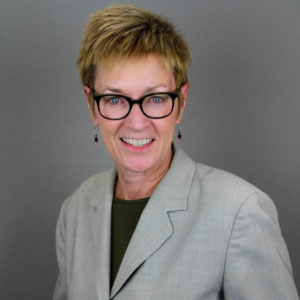





Molly B. Schmid, Ph.D. has had a career that spans from “bench to boardroom” in academia and the biotechnology industry. Her scientific research pioneered the development of tools to exploit microbial genomics for antibiotic drug discovery. In industry, she progressed through positions of increasing leadership in small and medium sized biotechnology companies, which raised money through venture investments, corporate partnerships, federal grants and public offerings. Dr. Schmid has served as an advisor, reviewer and chair for numerous NIH and NSF proposal review panels. Currently, she serves as an advisor and consultant with UC Irvine’s Small Business and Technology Development Center, is an Entrepreneur-in-Residence at the Alfred Mann Institute for Biomedical Engineering at USC, is a faculty advisor and adjunct professor at UCLA Anderson and at USC Marshall’s Greif Center for Entrepreneurial Studies. She is a member of the Inland Empire Tech Coast Angels, a Fellow of the American Institute for Medical and Biological Engineering and a Fellow of the American Academy of Microbiology.
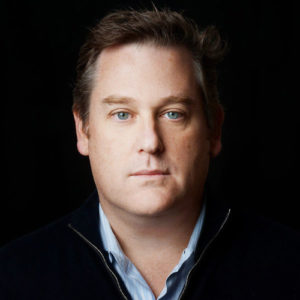





Sean serves as Chief Executive Officer and a member of the board of directors of Leaf Group. Sean was previously the CEO of Saatchi Art, which Leaf Group acquired in August 2014, and the President and CEO of Ticketmaster, where he also served on the board of directors. Sean held positions of increasing responsibility during his tenure at Ticketmaster, including EVP, Technology and Chief Operating Officer. Sean has also served as an Entrepreneur in Residence at Mayfield Fund and he began his executive experience as EVP, Technology at Citysearch.
Sean sits on several private company boards of directors, including Eventbrite and TuneIn. Sean is also actively involved in non-profit work with CoachArt and the Pat Tillman Foundation.
Sean received his bachelor’s degree from the University of South Carolina and attended graduate school at Boston University and the University of South Carolina.
MEET THE TEAMS
Life Science – Therapeutics Track
Preet Chaudhary, Founder
USC
Chimeric Antigen Receptors (CARs) are synthetic immune-receptors, which can redirect immune T cells to selectively kill tumor cells. Despite the recent FDA approval of Kymriah (Novartis) and Yescarta (Kite/Gilead), the CAR constructs in current use have several limitations which will severely limit the commercial success of this technology in blood cancers and prevent its success in solid tumors. These limitations include
Toxicities
CAR-T cell exhaustion and lack of persistence, which contribute to disease relapse in blood cancers and lack of efficacy in solid tumors
Paucity of suitable targets for solid tumors
High cost of manufacturing.
A number of these limitations can be traced back to the design of current CAR constructs which is nearly 30 years old. To overcome the design limitations of the current generation CAR constructs, we have developed a novel platform, designated SIR (Synthetic Immune Receptor), which provides physiological signaling. In contrast to CAR constructs, SIRs engage the full T cell receptor complex, including all receptors and co-receptors, resulting in strong signaling and effective destruction of tumor cells. Due to their physiological design, SIRs are also expected to be safer as compared to the current generation CAR constructs. We have obtained convincing evidence of superior efficacy of our SIR platform against both blood cancers and solid tumors using in vitro and animal studies. Additionally, we have generated over a thousand SIR constructs targeting more than 130 target antigens covering blood cancers, solid tumors, immune and infectious diseases, making our CAR-T portfolio one of the largest in the world. We have produced the cGMP grade lentivirus vector for our first construct and expect to file IND in 4-8 months. IND-enabling studies are currently in process for another 5 constructs targeting distinct antigens expressed in hematologic malignancies and solid tumors.
Masaru Rao, Assoc. Professor
UC Riverside
- Unlock the full potential of ex vivo cell & gene therapies
- Improve the lives of tens of millions worldwide
- Enable the expansion of billion-dollar markets already exploding with growth potential
THE PROBLEM – prevailing gene delivery limitations
Ex vivo cell and gene therapies show promise for curing a wide range of diseases and disorders afflicting tens of millions worldwide (e.g., cancer, genetic disorders, degenerative diseases, etc.). However, full realization of this promise is constrained by limitations inherent to the prevailing (current) gene delivery methods used to engineer cells for such therapies. Problems include safety concerns, poor efficiency, limited scalability and limited versatility.
THE SOLUTION – nanomechanical gene delivery from Basilard BioTech
We are developing a proprietary nanomechanical device platform to provide unprecendented accuracy while delivering virtually any gene to the nucleus of cells, en masse, without compromising their viability.
Our innovation introduces opportunity to reduce cost and increase versatility relative to biological delivery methods (i.e., viral vectors), and to increase efficiency and safety compared to chemical and physical methods (e.g., liposomes, electroporation, & squeeze poration).
Shuting Sun, CEO
CalState LA
Our current focus is a novel, more effective bone-targeted antimicrobial lead. Our commercial goal is to bring to the market the first anti-infective bone graft substitute for use in dental and orthopedic surgery for the treatment and prevention of bone infections. This will be the first bone graft material (classifiable as a medical device) to possess powerful bone-binding properties which enables selective delivery of antibiotics to anatomic sites of osseous infection, with sustained local release of the antibiotic. Our novel technology addresses the unmet need for a safe, effective treatment of bone and implant infections in both dental and orthopedic applications.
BV has also developed a pipeline of IP and future development products from its Platform Technology. BV has received impressive non-dilutive funding from the National Institutes of Health (NIH) further validating the strength of its platform, totaling nearly $4.7 million. BV is therefore uniquely positioned to quickly translate this high value asset to clinical development.
Amir Nobakht, COO
USC
Milad Riazifar, CTO
CalState LA
COPD is an inflammatory, progressive, life-threatening lung disease. It is the 4th leading cause of death globally but is projected to be 3rd by 2020. A global prevalence of 251 million cases was reported in 2016. A total of 3.17 million deaths were caused by the disease in 2015. Currently, at least 16 million Americans are affected with COPD and direct medical costs in the U.S. are soaring to an estimated $49 billion annually.
COPD results in an irreversible and progressive airflow limitation. It is characterized by chronic inflammation of the airways and lung parenchyma, which is increased during acute exacerbations. Small-airway fibrosis in COPD is a result of chronic inflammation. There is also systemic inflammation, which likely contributes to cardiovascular and metabolic comorbidities. The immunological features of COPD include lung infiltration of various immune cells including an increased number of alveolar macrophages, infiltrating neutrophils, T lymphocytes and innate lymphoid cells recruited from the circulation.
Bronchodilators, developed for asthma, provide some symptom relief but do not modify the underlying disease or halt disease progression. Broadly immunosuppressant corticosteroids can reduce the frequency of exacerbations but also increase susceptibility to dangerous infections. Only rofumilast, a PDE-4 inhibitor, is specifically indicated for COPD but has dose-limiting side effects. Fixed-dose combinations of bronchodilators and corticosteroids perform best in COPD, indicating that multiple pathways must be targeted simultaneously to see a therapeutic effect. Indeed, most new drugs with a single mechanism of action fail to provide much benefit. A case in point was the unexpected failure of anti-TNF, Remicade.
Artie Suckow, CEO
University of San Diego
RNAi medicines are unique in that they stop a faulty DNA message from creating a faulty protein, stopping a previously undruggable target at its source. RNAi present a trillion-dollar opportunity, much larger than the entire small-molecule and biologics therapeutics space combined.
Unfortunately, RNA medicines do not cross cell membranes and are quickly cleared from the blood by the kidney/liver. Delivery methods to date, like lipid nanoparticles, have proven toxic. Targeting ligand approaches, like GalNAc conjugation, are suitable for liver uptake but so far solutions to effectively AND safely enable delivery beyond liver are limited. Still, the small number of currently approved RNAi drugs generate more than $1B in sales, command very high prices (drug price of $300k or more per year) and allow children with degenerative disease to walk again.
Our technology allows broad delivery throughout the body of all types of RNAi (bioactive siRNA, ASO and exon skipping drugs).
Our proprietary solution leverages fatty acids to facilitate cellular uptake, promote distribution beyond the liver and minimize toxicity. There are 3 main business opportunities that we are pursuing:
- Develop novel RNA medicines target orphan disease;
- Partner with Pharma to address identified targets for which small molecular or biologic approaches have not succeeded;
- Partner with RNA medicine company to improve delivery/bioactivity.
Jenny Wang, CEO
UC Irvine
JeniVision have also invented the first drug (JV-DE1) to treat ocular surface pain and discomfort. This a well recognized unmet medical need. A single dose of JV-DE1 lasts 1-2 days.
Bahman Anvar, Professor & Founder
UC Riverside
Radoptics LLC is interested in development and commercialization of cell-based technologies for image-guided treatment of cancers, particularly ovarian. The company is developing optical probes derived from red blood cells that are doped with near infrared imaging agents for intraoperative visualization of small tumor nodules (< 1 mm) during surgery.
Frank Volvovitz, President
UC Irvine
RNAceuticals is developing a disruptive category of medicines based on self-amplifying RNA or SAR that promises better medicines across the spectrum of human diseases. Acting as cellular software, SAR medicines instruct a patient’s own cells to make proteins that prevent, treat and cure disease. SAR medicines have the potential to be more effective, longer lasting, safer and more affordable than the protein-based medicines made by cell culture today.
Although the idea of using RNA to function as a medicine is not new, putting it into practice has required new technologies to effectively deliver RNA to cells, and, for some uses, reduce anti-RNA defenses. The company calls its combination of SAR and delivery technologies “VECTORNA™”. Distinguishing features of VECTORNA compared to competing mRNA technologies include lower effective doses and longer therapeutic windows.
We are collaborating with University of California, Irvine scientists who have developed proprietary, synthetic nanoparticle formulations to effectively deliver SAR. Our product pipeline is focused on immunotherapeutic proteins, which are the subjects of collaborations with the National Institutes of Health (NIH) and the U.S. Army (Army) and plan to deliver candidates for evaluation by the NIH and Army in the second quarter of 2019.
Serial biotech entrepreneur Franklin Volvovitz and pharma industry veteran George Mark, III, Ph.D. lead RNAceuticals. Mr. Volvovitz previously founded Protein Sciences Corporation (PSC). Under his leadership the first and only FDA licensed, recombinant influenza vaccine, Flublok, was invented and brought to clinical trials. Sanofi purchased PSC for $650 million plus milestone payments in late 2017. Dr. Mark has led research teams at Merck and Celldex, which advanced a broad range of vaccine and antibody candidates including Merck’s Gardasil and RotaTeq vaccines from early development to clinical trials.
Life Science – Diagnostics Track
Bradley Messmer, Doctor & CEO
UC San Diego
Abreos Bioscience is a precision medicine company that wants patients to get the right drug AT THE RIGHT DOSE.
For most medications it is murky how much of an administered dose will show up in the patient’s blood stream or “target location”, and how quickly this effective dose is then broken down over time. This is due to every individual showing markedly different reactions to any specific drug, which can in some cases vary 100-fold from one patient to the next. As a consequence, standard doses are calculated at a very high level, with a huge proportion of patients in effect being overdosed. Especially in relation to “high impact” drugs like for cancer and auto-immune treatments, this overdosing is known to result in serious and sometimes lethal side effect.
Abreos Biosciences has developed the Veritope Precision Dosing platform for unparalleled measurements of these “pharmacokinetics” – the rate at which drugs are transported in the body. We are using this technology to enable precision dosing and novel indications for existing biologics (known as drug repositioning). Our lead program is a novel integrated therapeutic for treatment of multiple sclerosis, a chronic disease. Our approach combines a significantly de-risked development pathway (since the biologic drug component is already being successfully used off-label) with full IP and regulatory exclusivity – creating a unique competitive entry into the quickly growing $5.9B MS biologic market.
Tim James, CEO
UC Santa Barbara
The µTexture technology is a paradigm change in how magnetic resonance scanner data is acquired, a change that greatly increases diagnostic capability. µTexture enables extension of measurement resolution, for assessing biologic tissue, into the tens of microns range even in the presence of significant patient motion. This ability enables measurement and tracking of the pathological tissue changes that are the earliest indicators of disease. As such, it has the potential to be a game changer in both disease treatment and in drug discovery, for a range of debilitating diseases currently stymied by lack of a robust and sensitive diagnostic (liver disease, lung disease, prostate disease, brain cancer, breast cancer, bone disease, dementia…) This novel diagnostic technology has the ability to target patients for trial inclusion at an early stage of disease, and sensitively measure their response to therapy, enabling more-informed development of treatments.
Our initial diagnostic validation targets are Alzheimer’s disease (AD) and prostate disease. Currently, therapy development efforts in AD are stymied by inability to measure the relevant early-stage pathologic tissue changes—something our new diagnostic holds great potential to enable. Multi-parametric MRI is increasingly used in the prostate disease workup, so addition of a high-information-content quantitative sequence has the potential to enable more informed treatment decisions.
The µTexture technology has the ability to replace highly invasive and error-prone biopsy-sampled pathology measures in a large range of disease diagnostic work-ups. The barrier to adoption is low, as the diagnostic adds negligible time/effort to an MR exam. while greatly increasing diagnostic information. The diagnostic output data is direct, quantitative, and highly structured, facilitating sensitive biomarker development through use of machine learning analytics.
Jeff Coleman, CEO
UC San Diego
In a research study at UC San Diego, the attention training games increased orienting attention by 68% and reduced distractibility by 55%, as well as improved focus by 30% in individuals with ADHD symptoms. These results were measured by independent attention assessments and have been published in the peer-reviewed journal Developmental Neurobiology.
Increasing attention skills provides a foundation for better executive function and improved academic success.
Courtney Farr, Nurse Practitioner
Cal Poly
Bop Lansdorp, CTO
UC Santa Barbara
Our company has created the ION™ Platform: our patented wearable alcohol sensor together with an app and a cloud platform. We have recently shipped our first units to paying customers: researchers and early adopters in the Alcohol Use Disorder treatment space. In the future, we aim to leverage our customer base to help develop new treatment tools for Alcohol Use Disorder.
Nasam Chokr, CEO
UC Irvine
Asthma affects 334 million people and chronic obstructive pulmonary disease affects 65 million people in the world. The leading cause of death from asthma and COPD is poor management. As much as 90% of patients do not take their inhaled medications correctly. Our solution to the problem is the Unaresp.
The Unaresp is a non-invasive and quick tool to measure adherence to medication and promote asthma and COPD management. This works by detecting biomarkers from the patient’s exhaled breath. It analyzes different molecules within the breath and records their concentrations over time. This results in important qualitative information about the patient’s status and progress with their disease. It can detect the concentration of the medication that is inhaled by asthma and COPD patients and know how long ago the patient has taken their inhaler. This information is crucial for physicians, as they currently have no way to obtain real-time qualitative data about inhaled medication and oftentimes make treatment decisions based off of estimations. Over-prescribing inhaled corticosteroids is very common and often results in the overdosing of the drug, which requires emergency medical attention. Additionally, the Unaresp measures oxygen, carbon dioxide, and nitric oxide in the breath, which are indicative of airway inflammation.
Not only can the Unaresp assess adherence to medication, but it can also establish patient-specific baselines and personal best, optimizing asthma and COPD treatment. The Unaresp functions as both a diagnostic and educational tool as it provides the user with instant feedback about the quality of their inhalation.
Chris Straka, CEO
UC San Diego
To address the need for better patient support tools, we have formed a digital health company, RadCare Health, Inc. We are building on the insights of several very successful apps supporting pregnant women, which predict what patients will need to know and present “just in time” information updating throughout pregnancy. Initially we are focusing on apps supporting radiation oncology patients, but later we plan to expand into general oncology and finally into general healthcare. We envision the creation of a digital health assistant that could be freestanding or integrated into existing virtual assistants such as Siri, Google Assistant, etc.
We have created an app called RadCare (developed at UCSD by company founder Chris Straka and licensed exclusively to RadCare Health, Inc.), which is a minimum viable product (MVP) serving prostate cancer patients receiving radiotherapy. RadCare syncs with patients’ treatment timeline and presents timely, pertinent information before, during and after radiotherapy. We overcame several obstacles in bringing this MVP to the iOS app store, including developing a system to track, and re-calibrate if necessary, patients’ treatment progress during radiotherapy, a paradigm for deciding what content should be presented when during treatment, and a framework to serve content appropriately and to enable “browsing” of knowledge modules if desired by the user.
Thomas Berryman, Co-Founder
UC Irvine
Soft Health is bringing new innovative solutions to the millions of women who experience a very common health/wellness condition and have had to put up with the same old solutions that were offered to their grandmothers.
The Finess Softpatch is a totally new approach to managing mild to moderate bladder leakage. As the first FDA-cleared over-the-counter (“OTC”) bladder leak product, it’s placed over the urethral opening, stopping leaks before they happen. It’s comprised of a foam body that fits comfortably and a gentle hydrogel adhesive that is easy to place and remove without pain or residue. With Finess there are no bulky pads, no uncomfortable inserts, no odor, no discomfort, no embarrassment … no leaks.
Gary Lauterbach
Skysong Enterprises
Our disruptive technology – a swallowable, digestible pH biosensor: Our innovation is to resolve the incompatibility of traditional semiconductor materials with the GI tract by building the entire pH sensor utilizing digestible and benign materials. The proposed swallowable, digestible pH sensors have unprecedented merits that are lacking in the current ingestible electronics. The edible pH sensor can be used in many scenarios: this would be useful for monitoring response to therapy such as for patients on acid suppression therapy with proton pump inhibitors; this would allow for repeated administrations and measurements over time or even within the same day as gastric acid secretion is known to vary over the course of the day.
Lorenzo Rossini, Co-Founder & CEO
UC San Diego
Veocor has developed the first personalized tool to provide a quantitative assessment of the risk of cardiac blood clot formation and associated stroke. Veocor’s patent-pending technology analyzes standard ultrasound images to provide a quantitative measure of blood flow within the left ventricle, identifying areas of blood stasis which are most susceptible to thrombus formation. It uses standard echocardiographic views, does not require special hardware nor special operator training. The analysis is performed in the cloud via a web interface and takes less than 5 minutes.
Veocor’s software can be transferred to the clinical setting to guide personalized decisions about the use of anticoagulation therapies. Veocor plans to pursue FDA regulatory clearance via the 510(K) route. The company will initially sell the technology directly to cardiovascular centers and hospitals as a cloud-based solution and use data generated through clinical use of the technology to ultimately obtain a reimbursement code, enabling a pay-per-report model.
Technology Track
Paul Sargeant, CEO
Caltech
Microscopy has changed little in the prior 200 years using conventional optics and moving stages. We exploit a computational imaging IP estate from Caltech that overcomes current limitations in conventional microscopes and providing larger field of view, better resolution, more data per experiment and all in focus. Microscopy for the computational age.
Thomas Russell
Caltech
ETC Solar, Inc is commercializing world’s highest-performing front contact technology for solar cells: effectively transparent contacts (ETCs). ETCs are the first industrially viable approach to completely eliminate front-grid shading loss; the leading source of practical power loss for nearly all types of solar cells. By integrating ETCs with solar cells, the power output is increased by up to 10% and manufacturing costs are dramatically reduced.
Saakib Akbany, Co-Founder & CEO
UC San Diego
FreeGen Technologies is developing the SeaSkimmer, a “Roomba” for the ocean. The SeaSkimmer is an autonomous marine drone that actively tracks and collects trash in ports and harbors. The vehicle utilizes machine learning algorithms to predict the locations of high-density trash hotspots correlated to oceanic data. The electrical systems are powered by solar energy, and the devices can also be used to capture critical oceanic data for researchers and government agencies alike.
Our drones will navigate autonomously using a GPS, Lidar, and graphical data from visual and infrared cameras. They will also utilize an API from the global Live Ship Tracker feed, which maps out the real-time locations and speeds of boats across the world. This combination will allow us to avoid all obstacles and collect trash around these closed waterways. In closed water bodies, trash accumulates in high-density locations known as hotspots. The locations of these hot-spots are linked to data points such as oceanic currents, temperature, and weather. However, this data is rarely updated and not very accurate. Instead, we plan to determine high-density trash locations in waterways tied to geospatial coordinates and use our machine learning algorithms to correlate that to oceanic data like currents, weather, and temperature. This will allow our drones to predict where those hotspots are moving, thereby enabling each drone to plan efficient routes and collect more trash at a lower cost of operation. Once the drones have collected the trash, they return to these centralized hubs. While there, they drop off their trash, have their batteries charged by solar systems, and transmit the data they receive.
Chad Wasilenkoff, CEO
UC Riverside
Millions of years ago, the “smasher” mantis shrimp, one of nature’s feistiest predators, evolved to develop an internal structure to protect its hammer-like club it uses to pulverize prey with incredible speed and force. This unique structure that wraps around the mantis shrimp’s club protects it from self-inflicting damage as it crushes hard-shelled prey. The University California Riverside (UCR) has spent over 11 years and almost $9 million dollars reverse engineering the club and has determined that it is not the material, but the structure that provides the strength and toughness. The material is organized in sheets of locally parallel fibers that are stacked upon each other such that each sheet is skewed by an angle from the sheet below it. This unique structure is called a helicoid and has now been broadly patented by UCR and licensed to Helicoid Industries to commercialize its use in composite materials.
Manufacturing ultra-strong composite materials and components using this helicoid structure will result in them being lighter, stronger, tougher, and more impact resistant. The benefits of the helicoid structure has been demonstrated regardless of the materials used to create the composite material. By simply shifting to a helicoid structure when manufacturing these same composite components will result in achieving further enhancements and improvements to an already well-established composite industry. This helicoid structure is a platform technology that can easily be applied to numerous industries that are constantly searching for lighter and stronger components.
Brand Caso, CEO
CalState LA
Mesh Candy sells smart sensor data networks to hospitals, surgery centers, pharmacies, laboratories, veterinary clinics and physician offices nationwide. This IoT solution is used for environmental monitoring, asset tracking, people tracking and wayfinding.
Warren Fon, Research Engineer
Caltech
We have successfully built a system consisting of an eight node analog network with nano-electro-mechanical-system (NEMS) oscillators (see on our published work in Science, 08 Mar 2019: Vol. 363, Issue 6431, eaav7932). Our company is to relegate this technology to develop analog computational products used in optimization and neuromorphic data-intensive computations. Such calculations are in huge demand and actually form the backbone in machine learning and neural networks. Novel low-cost hardware providing energy efficient operations will have a huge impact on the market. Our business plan entails an initial network prototype of 1000 NEMS to be built in 1 year and a scaled-up network of NEMS to be completed in 4 years. The product can implement many network-centric computational paradigms, including parallelized combinatorial optimization, (classical) adiabatic annealing, and neural networks with learning and reinforcement. The NEMS network can perform faster than their digital counterpart by 1000x improvement in speed. The extremely high dimensionality of the NEMS network is the key; it enables realization of complex neural networks.
Our 4-year goal is to create systems of large network that is capable to cover large scale machine learning operations. In addition to hardware development, the engineering team will develop both machine-level and high-level software through interactions with early adopters and technical partners. The technology is being developed in the research lab of Prof Roukes at Caltech and the company is only in the beginning stages. The company will be operational in the 2nd half of 2019 to transfer the technology from an academic to a commercial entity in development of the prototype. We envision a small team of 6 people (CEO + 4 engineers + admin) in the first year. The small team is capable to deliver the prototype as the hardware and software are designed in house while the manufacturing is outsourced. Later, with support from investment and SBIR, we will expand to ~20 team members.
Katerina Axelsson, CEO & Founder
Cal Poly
Tastry is a software and insights company that combines analytical and flavor chemistry and machine learning algorithms to predict consumer preferences for sensory-based products.
Tastry was born because we saw an opportunity to create a more transparent way to connect consumers to products they will love.
Here’s how it works:
First we chemically analyze products at the Tastry lab, then we feed the product data into our proprietary AI engine. This is where we process the data and the thousands of flavor compounds found in a bottle of wine, a process that we refer to as “breaking down the flavor matrix.” We then have an AI-generated quiz, with questions like “How much do you like coffee, baking spices, or cherries?” that can then identify the users palate preferences in 20 seconds.
The quiz and recommendations are based on the store where you are currently shopping.
Taylor Heisley-Cook, Co-Founder & CEO
UC Santa Barbara
The Hurd Co makes fabric from cannabis waste to conserve resources for the next generation. By 2050, resource consumption by the apparel industry alone is projected to triple. This simply isn’t possible; we do not have the land and resources to keep up with this growing demand. The apparel industry is looking for alternative feedstocks to reduce their dependence on virgin raw materials.
There are 3 main kinds of fabric. The two we are most familiar with are natural fiber (like cotton, linen, or hemp), and polyester. The fastest growing market segment, however, are manmade cellulosics (MMCs). MMCs are “fibers extruded from wood pulp”; basically, they’re fabric made from trees. MMCs are considered semi-synthetic because of the intensive chemical processing required to turn the wood into fiber. We know them as viscose/rayon, lyocell, or modal. 155 million trees were logged for viscose production last year. This annual number is expected to double by 2025.
So we set out to find a waste stream to offset this impact. We needed a waste stream that was (1) abundant enough to reasonably feed into the apparel supply chain, (2) available to us here in California, and (3) had a high enough cellulose content to be turned into apparel-grade pulp.
That brings us to cannabis. The Hurd Co works with both hemp and marijuana. Both crops are grown in the US for seed, leaf, and flower, but the majority of the biomass — the stalk — is considered a waste. This stalk waste is sent to landfill or burned at a rate of about 1 million pounds per week in California. Fortunately, some of that waste is starting to be sold to oil extractors. That’s where The Hurd Co comes in.
The Hurd Co collects waste from cannabis oil extraction facilities, uses a low-impact pulping process to convert it to an apparel-grade pulp, and then sells it into the apparel supply chain to be turned into fabric.

